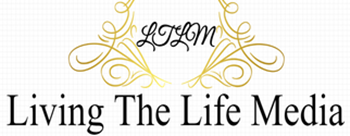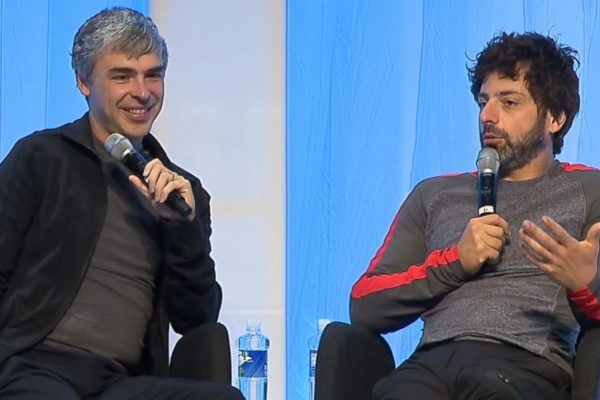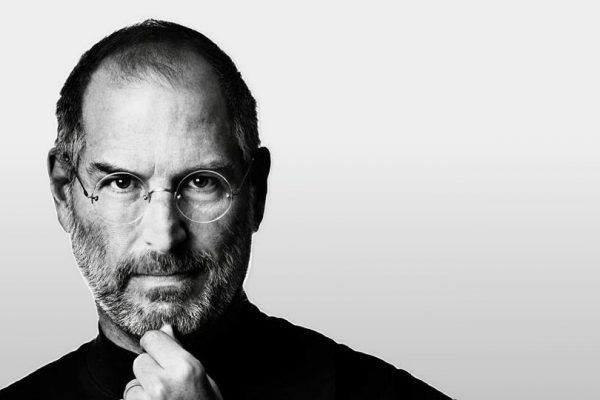In this success story, we are going to share Bill Gates biography, a prominent American entrepreneur, investor, philanthropist with a terrific career in a development of software for personal-computers. He is the co-founder of Microsoft Corporation, one of the most recognized brands in the computer industry; nearly every computer has at least one Microsoft product installed.
The life story of Bill Gates reminds an American dream. Due to the hard work, he has achieved not only the prosperity of the company, but also the title of one of the richest people on Earth.
Gates has been No. 1 for many years on the Bloomberg Billionaires List, but Carlos Slim Helu took No. 1 spot in 2010. And in May 2013, with a fortune of $72 billion Bill Gates became the richest man on the planet again and retook the world’s richest title from Carlos Slim. Bill Gates’ net worth was $79.3 billion as of April 09, 2015. Early Life
William Henry “Bill” Gates III was born on October 28, 1955 in Seattle, Washington in a fairly wealthy family of William Henry “Bill” Gates, Sr. – a successful attorney and Mary Maxwell Gates – a former school teacher, who later became a member of the Board of Directors of the First Interstate Bank.
Being a child, Bill Gates already possessed a prospective businessman talent, especially in mathematics. It is not accidental that at school he scored 800 points in the mathematical part of the intelligence test, showing the best result. However, the family expected Bill Gates to follow his father’s steps and enter Harvard Law School.
In 1968, when Bill and his high school friend Paul Allen went to middle school, the school administration decided to buy a computer time from the General Electric Company. At that time, the system based on DEC PDP-10 micro-architecture was a basis on the market. Later, he said: *“When I was thirteen, my school (Lakeside School) installed a teletype machine. From that point on, my friends and I spent most of our free time writing programs and figuring out how to make the computer to do interesting things.”* The school administration had underestimated its students – the whole year of the computer time was used in a few weeks. Fortunately, a new student arrived in Lakeside, whose father worked as a senior programmer in Computer Center Corporation (CCC). The new contract allowed Gates and his friends to continue their experiments.
Young hackers quickly figured out the intricacies of the machine, found the weaknesses and started causing trouble – they broke the defense, which on several occasions led to a system failure and changed the fil that contained records of computer time. CCC noticed that breach, and set them aside from working with computers for a few weeks.
Meanwhile, the company’s business began to suffer from constant failures and poor protection. Remembering the destructive activities of computer users from Lakeside, CCC invited Bill Gates and his friends to identify flaws and security holes. As a payment, the company offered endless computer time for young hackers. Sure thing, Bill and his friends could not refuse. Since that day boys couldn’t say if it was a day or night outside – they were hanging out in the lab all the time. For instance, one project of Gates was a program for scheduling classes. ‘Somehow’, it constantly redefined Bill to the classes with the prettiest girls. In addition to troubleshooting, they studied each material on automated calculations and improved their skills.
In 1969, at the Computer Center Corporation experienced difficulties once again, and in 1970, it declared itself a bankrupt. The Lakeside’s students lost their job and access to computer time. Paul Allen’s father was working at the University of Washington and had an access to the computer center. Young programmers got down to business looking for an area where to apply their knowledge. In 1971, the Information Sciences hired Bill Gates and Paul Allen to create software that would be make-up payroll sheet. In addition to unlimited computer time employers have agreed to pay the developers every time their software will bring the company profit.
The young programmers regularly received orders. Bill Gates was the initiator who said: *“Let’s call the real world, and sell it something.”* And the most interesting thing that he did find clients and sold them his software. For example, once he developed software to optimize road traffic and sold it for $20,000 dollars. He was only 15 years old!
Bill Gates’ parents were extremely frightened of the enthusiasm of their son and by a willful decision they banned him from computer projects. For a year, Bill did not approach the object of his passion, reading the biographies of famous people from Napoleon to Roosevelt. By the age of seventeen Gates received a proposal for writing a software package for Bonneville Dam, which his parents didn’t reject. For a one-year work on this project Gates received $30,000 dollars. Establishment and Development of Microsoft
In June, 1975, Bill Gates creates a company for software development and names it Microsoft
Bill Gates and Paul Allen, 1975
Early next year, Gates and Allen found out that the income of the company has dropped to the lowest affordable point. Its main reason was so called ‘piracy’ – illegal copying of software and the use of it without permission of the creator. Many people simply copied the MS-Basic and handed it to someone else. Realizing this, Bill Gates was furious, especially because ‘piracy’ was depriving him from the well-earned income. In addition, these copies contained some mistakes which he wanted to reduce before the formal release of MS-Basic. Gates wrote an open letter in February 1976, which was published in a newsletter for Altair users. In response, the Gates Foundation has received 300 letters, but only a few of them contained a check.
Bill Gates was the very first to state the need in a protection of the software. His actions have made an incredible contribution to the gradual introduction of a thought that a computer program is a product of creativity and therefore must be protected in the same way as a musical composition or a literary work.
In 1976, it became obvious that Bill Gates could not continue his studies and manage a growing company at the same time. In December, he left the university, despite of all the objections of his parents, and fully engaged with the business. At that time, he was only twenty one.
Then, the young businessmen got a lucky strike and the profit of Microsoft sales reached $500,000 dollars for the 1977 financial year. The company, based in Albuquerque, New Mexico, had a staff of 13 people. Paul Allen and Gates were engaged in organizational issues: Paul was responsible for the development of new software, and Bill communicated with the computer manufactures, and ran daily operations of the company
In 1979, Bill received an offer from IBM to create an operating system for the world’s first personal computer. However, Bill Gates was forced to deny the proposal of IBM, as he did not have any drafts for creating OS at the moment. Therefore, the CEO of Microsoft was forced to recommend IBM to seek help from its competitor Digital Research, which later will be the developer of the OS for IBM personal computer.
Meanwhile, Microsoft buys a ‘crude’ operating system 86-DOS for $50,000 dollars from the Seattle Computer and hires Tim Paterson, the creator of 86-DOS. Bill Gates’s company greatly refined 86-DOS, and soon the world saw MS-DOS, which Microsoft offered to use as the main OS for IBM personal computer, thus beating Digital Research. In September 1980, IBM signed a detailed contract with Microsoft. This contract was destined to change the history of the personal computer industry. Both IBM and Microsoft benefited from it. Gates’ main competitor Digital Research changed the course of business and they were no longer involved in the competition.
In 1981, Microsoft becomes a corporation, the management of which is shared between Bill Gates and Paul Allen. In the same year, IBM introduces its personal computer with 16-bit operating system MS-DOS. In addition, the IBM PC includes other Microsoft products such as BASIC, COBOL, Pascal and others.
From Bill Gates biography we learned that in 1982, Gates convinced IBM management that MS-DOS should be sold under the license and other computer manufacturers, thereby making the competition of Apple, which was selling its computers based on its own operating system.
In 1983, The Microsoft Hardware group (formed in 1982) creates a manipulator called ‘Mouse’ for an easy data input into a computer with a graphical user interface. In the same year, the corporation presents a text editor for MS-DOS. In addition to all of these, the company of Bill Gates announced Windows – the extension of the operating system for MS-DOS as a universal operating environment for graphics applications.
In 1986, Microsoft entered the IPO market and during just one day one share cost grew up from $22 to $28 dollars. It goes without saying that since this then, Microsoft started to dominate an entire industry – it owned about 44 percent of all profits software market. It also kept other companies from growing. In 1991, Mitch Kapor, the founder of Lotus Development Corp. declared in his interview: *“The revolution is over, and the free-wheeling innovation in the software industry has ground to a halt. For me it’s the Kingdom of the Dead.”*
This statement is confirmed by the fact, that in 1993, the number of registered users of Microsoft Windows reached 25 million people. Thus, Windows becomes the most popular operating system in the world with a graphical interface. Microsoft also released Windows NT – a number of operating system designed for workstations and servers.
Two years later, the Microsoft Corporation deployed Windows 95. The excitement about its sale was so great that in a line to a store one could find even people who did not have a computer. Just in one year, 25 million copies of Windows 95 were sold.
In 1996-97, the company launched the next generation of Microsoft Windows NT (4.0 and 5.0), which were significantly modified, compared to the first version of the software.
In 1998, brand-new Windows 98 sees the world. There were not too many changes made, with the exception of improved internal functions. Then, Microsoft creates Windows 2000. Later, it’s going to be called the best corporate operating system.
Code named ‘Longhorn’ in the early development stages, Windows Vista was released on January 30, 2007. It had the strongest security system ever and a matching Office suite, Microsoft Office 2007.
Windows 7 was built for the wireless world which arose in the late 2000s. By the time of its release, laptops were outselling desktops, and it had become common to connect to public wireless networks in coffee shops and private one at home.
In 2012, Windows 8 introduced major changes to the operating system’s platform in order to improve its user experience on tablets, where Windows was now competing with mobile operating systems, including Android and iOS. In particular, these changes included a touch-optimized Windows shell based on Microsoft’s Metro design, the Start, and other innovations. Windows 8.1 was released a year later. It addresses some aspects of Windows 8, which were criticized by users and reviewers. In one interview Bill Gates told that he was very proud of Windows 8 operating system. Windows 10 wes released in July 2015. It includes Edge browser, the new Microsoft browser that substitutes Internet Explorer. Windows 10 will be a free upgrade for Windows 7 andf Windows 8/8.1 during the first year ater the release.
Nov
01
2017
0 Comments





